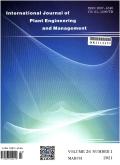Integrated Design of a Reactor Core for the Rolls-Royce Small Modular Reactor Project
International Journal of Plant Engineering and Management
Pub Date : 2018-07-22
DOI:10.1115/ICONE26-81311
引用次数: 0
Abstract
Rolls-Royce and a UK Consortium are progressing the design and development of a Small Modular Reactor (SMR) Power Station. The SMR programme is a phased design cycle, progressing through the Rolls-Royce gated review process. The project aims to deploy the first of a kind SMR in the UK by the end of the next decade. In this paper, the development methodology for the reactor core design is discussed, along with a selection of the key technical challenges that have been addressed during the concept design phase. Lessons learned from past projects have been identified, to help improve the design efficiency for the SMR. The concept design has been developed in an iterative fashion, with different analysis disciplines carefully integrated around a common set of objectives. Key economic requirements for an SMR core include maximising fuel economy, cycle length and thermal power while remaining small enough to enable a modular build approach. Top-level safety requirements include control of reactivity, control of core temperature and control of release of radioactivity/radioactive material. A set of surrogate design limits has been used alongside the true safety limits to avoid the need for detailed transient subchannel or fuel performance analysis in this phase. This has allowed the design to mature and be characterised very quickly, while also maintaining high confidence that all performance and safety requirements will be met when detailed analyses are undertaken. This paper describes the different analyses that have been undertaken to date, including a variety of reactor physics and thermal hydraulics calculations. The paper discusses the limits used, how they have been used to optimise the design solution and why they provide high confidence in the core design’s performance.劳斯莱斯小型模块化反应堆项目堆芯集成设计
罗尔斯·罗伊斯公司和一家英国财团正在推进小型模块化反应堆(SMR)电站的设计和开发。SMR项目是一个分阶段的设计周期,通过罗尔斯·罗伊斯公司的门控评审过程进行。该项目旨在在下一个十年结束前在英国部署首个此类小型反应堆。在本文中,讨论了反应堆堆芯设计的开发方法,以及在概念设计阶段已经解决的关键技术挑战的选择。从过去的项目中吸取的经验教训已经确定,以帮助提高SMR的设计效率。概念设计是以迭代的方式开发的,不同的分析学科围绕一组共同的目标仔细地集成在一起。SMR堆芯的主要经济要求包括最大限度地提高燃料经济性、循环长度和热功率,同时保持足够小,以实现模块化建造方法。顶级安全要求包括控制反应性、控制堆芯温度和控制放射性/放射性物质的释放。除了真正的安全限制外,还使用了一组替代设计限制,以避免在此阶段进行详细的瞬态子通道或燃料性能分析。这使得设计能够非常迅速地成熟和表征,同时在进行详细分析时,也保持了对满足所有性能和安全要求的高度信心。本文介绍了迄今为止所进行的不同分析,包括各种反应堆物理和热工水力计算。本文讨论了使用的限制,如何使用它们来优化设计解决方案,以及为什么它们对核心设计的性能提供高信心。
本文章由计算机程序翻译,如有差异,请以英文原文为准。
求助全文
约1分钟内获得全文
求助全文

 求助内容:
求助内容: 应助结果提醒方式:
应助结果提醒方式:


